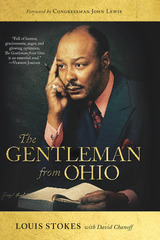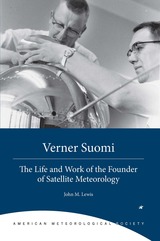4 books by Lewis, John

The Gentleman from Ohio
Louis Stokes with David Chanoff
The Ohio State University Press, 2016
Louis Stokes was a giant in Ohio politics and one of the most significant figures in the U.S. Congress in recent times. When he arrived in the House of Representatives as a freshman in 1969, there were only six African Americans serving. By the time he retired thirty years later, he had chaired the House Special Committee on the Kennedy and King assassinations, the House Ethics Committee during Abscam, and the House Intelligence Committee during Iran-Contra; he was also a senior member of the powerful House Appropriations Committee.
Prior to Louis Stokes’s tenure in Congress he served for many years as a criminal defense lawyer and chairman of the Cleveland NAACP Legal Redress Committee. Among the Supreme Court Cases he argued, the Terry “Stop and Frisk” case is regarded as one of the twenty-five most significant cases in the court’s history. The Gentleman from Ohio chronicles this and other momentous events in the life and legacy of Ohio’s first black representative—a man who, whether in law or politics, continually fought for the principles he believed in and helped lead the way for African Americans in the world of mainstream American politics.
Prior to Louis Stokes’s tenure in Congress he served for many years as a criminal defense lawyer and chairman of the Cleveland NAACP Legal Redress Committee. Among the Supreme Court Cases he argued, the Terry “Stop and Frisk” case is regarded as one of the twenty-five most significant cases in the court’s history. The Gentleman from Ohio chronicles this and other momentous events in the life and legacy of Ohio’s first black representative—a man who, whether in law or politics, continually fought for the principles he believed in and helped lead the way for African Americans in the world of mainstream American politics.
[more]

Labor Leaders in America
Edited by Melvyn Dubofsky and Warren Van Tine
University of Illinois Press, 1987
Here are the life stories of the men and women who led the labor movement in America from Reconstruction to recent times, from William H. Sylvis, the first major labor leader, to Cesar Chavez, who organized California's farm workers in the 1960s. In each profile, a leading authority provides a profile of the figure's life and work. Taken together, these short biographies provide a broad overview of the American labor movement that will appeal to students, interested readers, and specialists. Profiles include: William H. Sylvis, Terence V. Powderly, Samuel Gompers, Eugene V. Debs, William D. "Big Bill" Haywood, William Green, Rose Schneiderman, John L. Lewis, Sidney Hillman, Philip Murray, A. Philip Randolph, Walter Reuther, Jimmy Hoffa, George Meany, and Cesar Chavez
[more]

Resources of Near-Earth Space
John S. Lewis
University of Arizona Press, 1993
Originally published in 1993
From the original publication:
A base on the Moon, an expedition to Mars. . . . Some time in the near future, for scientific or cultural reasons, humanity will likely decide to pursue one of these fantastic ventures in space. How can we increase the scope and reduce the cost of these ambitious activities?
The parts of the solar system that are most accessible from Earth—the Moon, the near-Earth asteroids, Mars and its moons—are rich in materials of great potential value to humanity. Resources of Near-Earth Space explores the possibilities both of utilizing these materials to produce propellants, structural metals, refractories, life-support fluids, and other materials on site to reduce the costs of space exploration, and of providing a source of materials and energy for our own planet that would not be environmentally destructive to Earth.This volume summarizes the present state of the art in attempts to realize these possibilities: identifying the resources, mining and processing, transportation, and economics. As a broad survey of a rapidly evolving field, it is intended as a technical introduction to the use of nonterrestrial materials for scientists, engineers, and industrial and governmental project managers who seek to make space more accessible.
The parts of the solar system that are most accessible from Earth—the Moon, the near-Earth asteroids, Mars and its moons—are rich in materials of great potential value to humanity. Resources of Near-Earth Space explores the possibilities both of utilizing these materials to produce propellants, structural metals, refractories, life-support fluids, and other materials on site to reduce the costs of space exploration, and of providing a source of materials and energy for our own planet that would not be environmentally destructive to Earth.This volume summarizes the present state of the art in attempts to realize these possibilities: identifying the resources, mining and processing, transportation, and economics. As a broad survey of a rapidly evolving field, it is intended as a technical introduction to the use of nonterrestrial materials for scientists, engineers, and industrial and governmental project managers who seek to make space more accessible.
[more]

Verner Suomi
The Life and Work of the Founder of Satellite Meteorology
John M. Lewis et al.
American Meteorological Society, 2018
As the space age got underway in the wake of Sputnik, one of the earliest areas of science to take advantage of the new observational opportunities it afforded was the study of climate and weather. This book tells the story of Finnish-American educator, inventor, and scientist Verner Suomi, who, in those early days of space science, brought his pragmatic engineering skills to bear on finding ways to use our new access to space to put observational instruments into orbit. In 1959, Suomi’s work resulted in the launching of Explorer VII, a satellite that measured the earth’s radiation budget, a major step in our ability to understand and forecast weather. Drawing on personal letters and oral histories, the book presents a rounded picture of the man who launched the field of satellite meteorology—in the process changing forever the way we understand and interact with the weather around us.
[more]
READERS
Browse our collection.
PUBLISHERS
See BiblioVault's publisher services.
STUDENT SERVICES
Files for college accessibility offices.
UChicago Accessibility Resources
home | accessibility | search | about | contact us
BiblioVault ® 2001 - 2024
The University of Chicago Press









